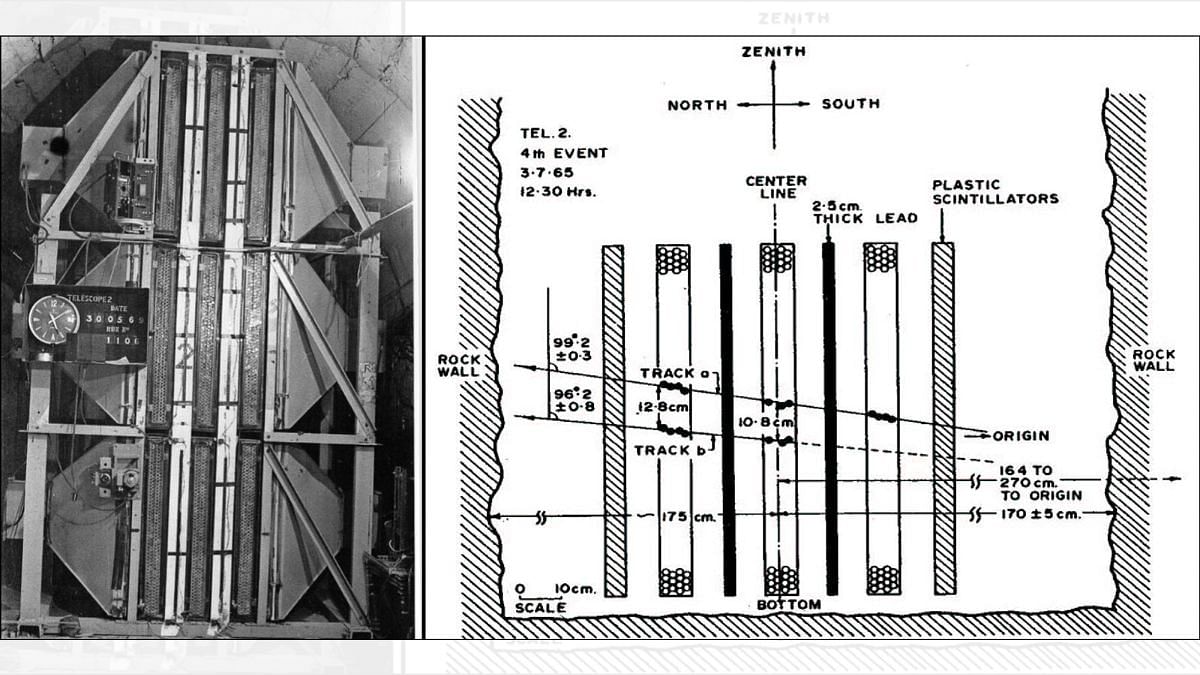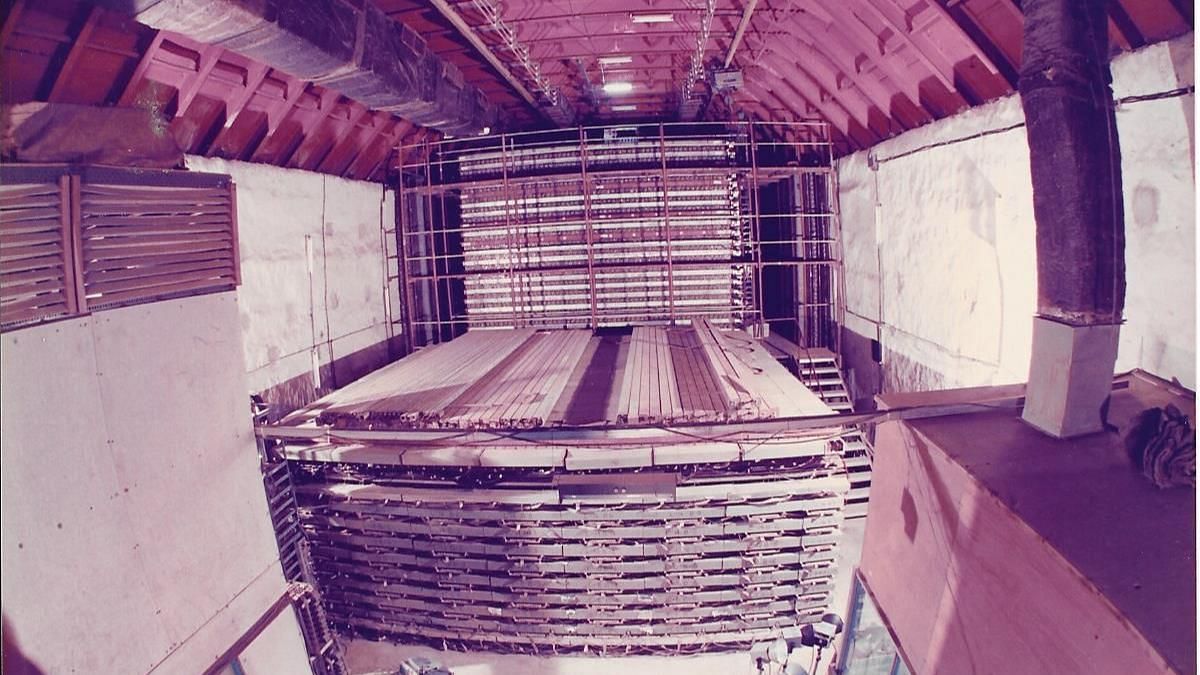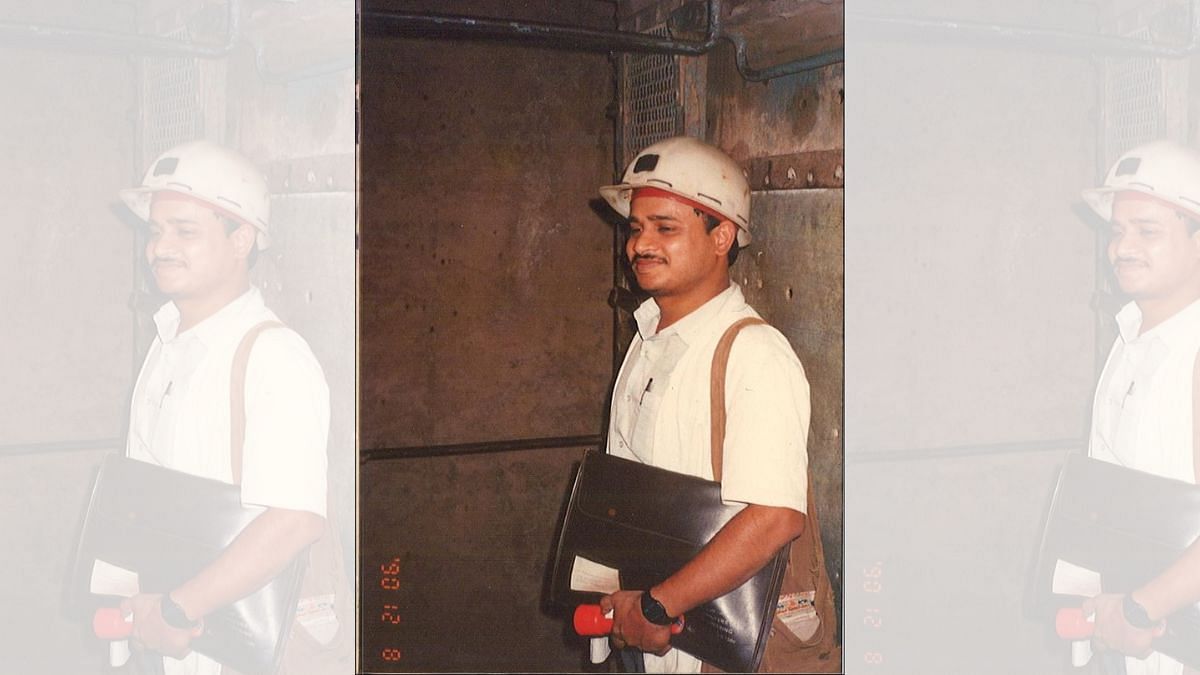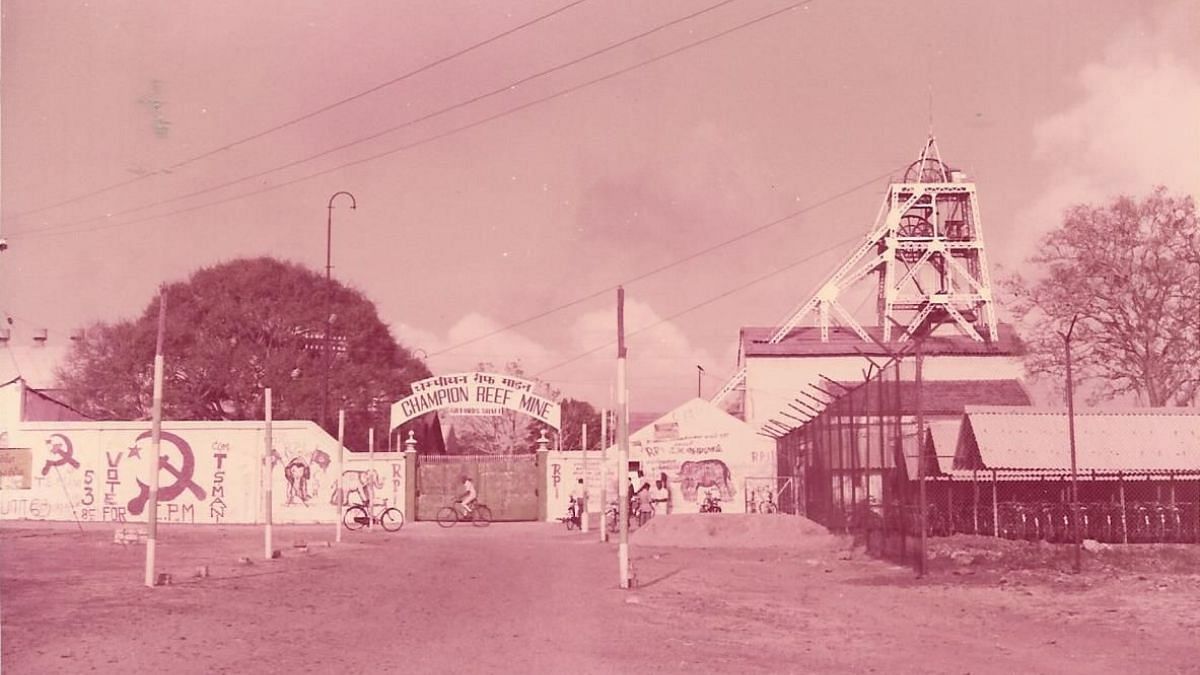Today, they’re abandoned again, but leave behind a legacy of not just gold, but experimental physics. The KGF experiments were precursors to other global experimental setups that continued the work that was done here. Many physicists who worked at KGF were soon a part of the Fermilab in Chicago, United States, which performed accelerator-based experiments and discovered the top quark—the heaviest elementary particle—in 1995.
Particle physicist B. Satyanarayana, who worked on the KGF experiments from the 1980s till the mines closed in 2001, said, “The neutrino experiments at Kolar, even today, are considered to have been some of the largest breakthroughs in the field in the world.”
Also Read: Nobel-winning quantum physicist Max Born once taught at IISc. His 6 months in India were bittersweet
From gods to god particles
Particle physics saw a massive burst of growth in the early 20th century, with large national budgets being drawn up for mega physics experiments. In the 1950s, India was setting up its legacy institutions, like Bhabha Atomic Research Centre, for atomic, scientific, and academic research and cosmic rays were all the rage.
Having just split the atom a little over a decade earlier, physicists were beginning to focus both on tapping atomic energy for power and on understanding what is present within atoms.
At KGF, they undertook the study of elementary particles—the building blocks of the universe that are so small that they can pass through most things, including humans and rocks.
In fact, they can pass through kilometres worth of physical barriers that could potentially stop other larger particles. As a result, experiments that detect and study such fundamental particles tend to be located deep underground.
The KGF offered the perfect site for this.
“Mines and such structures underground are the best places to set up such particle physics experiments because these are extremely sensitive and other particles or physical phenomena can mimic the same interactions that these particles, like neutrinos, leave inside the detector,” explained Satyanarayana, who recently retired from Tata Institute of Fundamental Research (TIFR)-Mumbai.
The KGF mines were small-scale operations that supplied wealth to plenty of South Indian kings until the second half of the 18th century, when the British Raj industrialised the mines to levels never seen before, attracting workers from all over the country. The mines were nationalised in 1956, after which physicists also began to use them to conduct scientific research.
Satyanarayana explained that the observations that were made in the mines occurred at a depth of nearly 2.7 kilometres.
“On average, we can consider that for every one-kilometre depth, the number of cosmic ray particles and signals reduces by a million times. So the further down we go, the better we can isolate these signals.”
There are 17 elementary particles in physics today. These are subatomic particles that are not made up of any more particles and join together to create composite particles, such as neutrons and protons.
Instead of breaking down, these fundamental particles decay into other particles because they are, in general, thought to be in unstable states. This is different from radioactive decay where particles release energy; here, they simply settle into a more stable state but with less mass.
This change of state that these elementary particles undergo can be observed in experimental setups, thus helping identify these particles themselves.
“There were nearly 400 km of underground tunnels at KGF, so it was like a whole parallel world,” said Satyanarayana. “The good thing is that these mines were very nicely operated. The labs were also set up like a big cavern and were air-conditioned.”
First-ever neutrino detection
Before the Indian team had begun their set up in the mines, Frederick Reines, won the 1995 Nobel for his particle physics experiments.
The physicist was a pioneer at the time in the field and an alumnus of Los Alamos which conducted nuclear tests under American theoretical physicist J. Robert Oppenheimer. He requested the mine authorities’ permission to set up experiments, but the request was denied by the authorities at the mine. Instead, and independently, Homi J. Bhabha, the then head of the atomic commission, set up an Indian team made up of three pioneers, explained Satyanarayana.

Famed physicist B.V. Sreekantan conducted the first physics experiments at the KGF in the 1950s, and he was followed a decade later by a team of three others—V.S. Narasimham, P.V. Ramanamurthy, and Saburo Miyake from Japan who together were called the MNR trio.
These experiments were sponsored by TIFR, and a large group of scientists, including those from Japan, worked under the ground here.
Under Narasimham, Satyanarayana joined in the late 1980s, when even more research teams from Japan worked in the KGF particle physics experiments, often joined by English teams. One of the largest collaborative experiments here was on proton decay and was called the Bombay-Osaka-Durham collaboration, run by TIFR Mumbai, according to Satyanarayana.
The detectors used here were both scintillators—which emit a flash of light when a particle interacts with a medium—as well as gas proportional counters. In the latter, when particles hit tiny cubic chambers of gas held inside the experimental setup, they cause ionization, resulting in gas getting charged. The process helps detect the fundamental particles called muons.
“The question then arises, how do we know if what we are seeing is the kind of particle decay we want to see? There’s a bit of theory here, where we set up experiments so that we can look for specific combinations of resultant signatures. The more we are able to collect, the more confidence we have that the particle indeed is the one we’re looking for,” said Satyanarayana.
When he worked in the mines, there were anywhere from 15 to about 40 people underground, working within the labs.
Many subsequent findings were made from the labs, but the most significant remains the detection of particles called neutrinos in 1965.
Meanwhile, Reines had joined a team in South Africa that discovered the exact results a mere couple of days after the Indian team. Both share the credit today, but the KGF mines are understood to have had the first-ever neutrino detection in the world.

Other results, KGF power, mine closing
Mysterious events were also observed at the mines, now called Kolar events, where the source of some signatures could not be confirmed. One theory is that this was the decay of dark matter—about which physicists know little. Another theory is that they could also have been neutrino interactions.
Images from the experiment, along with handwritten notes between physicists, have recently been displayed to the public for the first time at the Science Gallery Bengaluru.
As a part of its six-month Sci560 exhibition, titled ‘The Kolar Quest’, Sreekantan’s family donated a number of visual memorabilia for display. Visitors were told not just fascinating details about the experiments themselves, but other historic tidbits about major undertakings at the mine.
Mediators—guides who walk visitors through exhibits—explained to ThePrint that several people who had lived near the mines visited and gave personal anecdotes about life in Kolar when the experiments were ongoing.
According to mediator Lasya Digvijay, one of the most interesting pieces of information is the fact that Bengaluru had one of the first street lights to get electrified because of power lines that were fed to the mines. The cables, electrified in 1902 by General Electric, ran for 140 km from the hydroelectric power plant at Shivanasamudra Falls to the city.
In fact, one of India’s earliest, if not the first, power generation units was constructed at KGF in 1889 to support mining operations.
The mines were finally closed in 2001 for environmental as well as economic reasons.

India’s particle physics legacy
After the 1995 Nobel Prize was awarded to Reines for work that was first performed by Indian researchers, there was a lot of excitement in the community, and Indian scientists banded together to continue research.
“This support and excitement culminated in a high-energy physics conference in Chennai in 1999, where it was decided we must revive the neutrino programme of the country. The planned observatory was first called India Neutrino Observatory, but since we wanted international collaborations, it was renamed to India-based Neutrino Observatory,” reminisced Satyanarayana.
TIFR was the host institute and 25 collaborating institutes with over 100 researchers joined the project by early 2000, including those from the the central government’s Department of Science and Technology.
In 2002, as the Nobel was awarded to American and Japanese researchers for neutrino physics, the Indian physics community was geared up with a large budget and decades-spanning plans for scientific research at a new, state-of-the-art facility.
However, this observatory was doomed.
Since the set-up of such experiments required sites deep underground, they either had to be dug like mines were or built at surface level but under mountains which offered the same height barrier made of rock.
Engineers and physicists evaluate sites under both the Himalayan and Western Ghats mountains. Darjeeling, a site in Kashmir, and a town on the border of Karnataka and Tamil Nadu made it to the shortlist. Ultimately, Theni in Tamil Nadu was ultimately allocated to the project because it required fewer environmental clearances to construct such a massive, isolated project.
However, the plans never materialised. The project was stuck in a cycle of lawsuits and court orders.
As of March 2023, funding has been fully withdrawn for INO, making KGF the last remaining piece of India’s neutrino legacy.
(Edited by Sanya Mathur)

